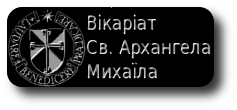
200,000 Visit St. Anthony's Relics
24-02-2010
PADUA, Italy, FEB. 23, 2010 (Zenit.org).- Some 200,000 people took advantage of the special showing of St. Anthony's relics that occurred at the basilica in Padua last week.
"What is amazing is that all those people -- it was an interminable procession -- had the clear perception not of being before someone who was dead, a skeleton or some bones, but before a person who is, and who is alive," the vicar-general of the Diocese of Padua, Monsignor Paolo Doni told Vatican Radio.
St. Anthony of Padua (1195-1231), one of the first followers of St. Francis of Assisi, is "one of the most popular saints in the whole Catholic Church, venerated not only in Padua [...] but in the whole world," Benedict XVI said at a general audience earlier this month.
This popularity was reflected in the large numbers of pilgrims who came during the 80 hours of the special display of the relics.
Monsignor Doni said it was a "spontaneous movement on the part of very many people, not only of the city and of the diocese, but also of many other places of Italy and also from abroad."
Communion of saints
The vicar said the large turnout shows that "people have a great need to have a spiritual reference point, a person."
The pilgrimages to Padua, he proposed, were due to "the presence of a person -- in this case Anthony -- who is not of the past but of the present," according to "the great truth that is the communion of saints," which "transcends time and space."
Furthermore, the monsignor continued, St. Anthony continues to represent today love of the poor, justice and the law.
"This presence of Anthony, with the values he proposed and continues to propose, has been as though renewed these days," he said.
A preacher
Last week's display marked the liturgical feast of the transfer of St. Anthony, also known as the feast of the tongue. The Feb. 15 feast commemorates the first time his remains were moved, April 8, 1263, under the direction of St. Bonaventure, and the final transfer, Feb. 15, 1350.
When St. Anthony's coffin was opened at the first transfer, some 30 years after his burial, most of his body was found to have returned to dust. However his tongue remained fresh, seen as a sign of his gift of preaching. Anthony's relics were last displayed in 1981, marking the 750th anniversary of his death.
http://www.zenit.org/article-28447?l=english














